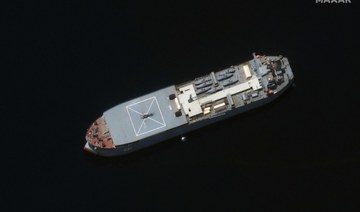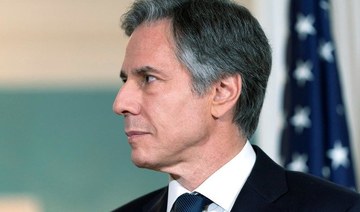VIENNA: Indirect talks between Tehran and Washington on reviving the 2015 Iran nuclear deal resumed in Vienna on Saturday as the European Union said negotiations were “intense” and Germany called for rapid progress.
The sixth round of talks kicked off as usual with a meeting of remaining parties to the deal — Iran, Russia, China, France, Britain, Germany and the European Union — in the basement of a luxury hotel.
The US delegation to the talks, known as the Joint Commission of the Joint Comprehensive Plan of Action (JCPOA), is based in a hotel across the street as Iran refuses face-to-face meetings.
The talks’ chief coordinator, EU foreign policy official Enrique Mora, who is leading the shuttle diplomacy between Iran and the United States, has said he expects a deal in this round of talks. Other envoys, however, are more cautious, saying many difficult issues are yet to be resolved.
“We are making progress but the negotiations are intense and a number of issues (remain), including on how steps are to be implemented,” an EU spokesman said in a statement to reporters, adding that the aim was “to find ways to get very close to a final agreement in the coming days.”
The deal, formally known as the Joint Comprehensive Plan of Action, imposed strict limits on Iran’s nuclear activities designed to extend the time Tehran would need to obtain enough fissile material for a nuclear weapon, if it chose to, to at least a year from two to three months.
Iran denies ever pursuing nuclear weapons, saying its aims are solely peaceful.
President Donald Trump pulled the United States out of the deal in 2018 and reimposed economic sanctions lifted by the deal. Iran responded by breaching many of those limits, producing more enriched uranium than allowed and enriching to higher purity levels, recently to near weapons grade.
“Playing for time is in no-one’s interest,” German Foreign Minister Heiko Maas, who is not at the talks, told Reuters, urging all sides to show flexibility and pragmatism.
China’s top envoy said the main sticking point was US sanctions. “Our message to them (the United States) is that they should stop shilly-shallying by moving decisively to sanction-lifting,” China’s ambassador to the UN nuclear watchdog, Wang Qun, told reporters.
On the steps Iran must take to return to compliance with the deal, Wang said: “To a great extent, the major issues have been worked out as a matter of principle, though I think there are some fixes (left).”
‘Intense’ Iran nuclear talks resume as Germany calls for rapid progress
https://arab.news/8mkke
‘Intense’ Iran nuclear talks resume as Germany calls for rapid progress
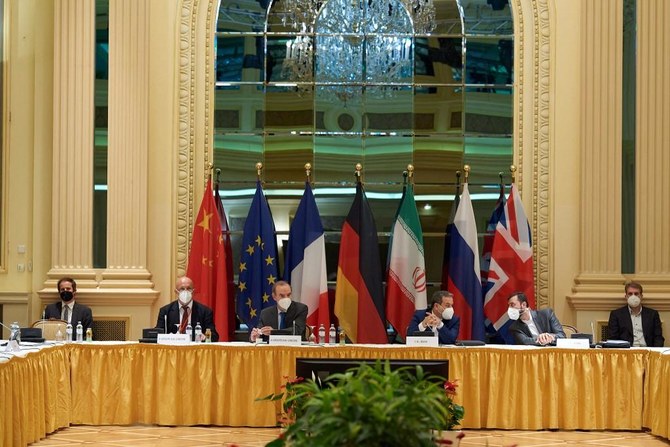
- Senior diplomats from China, Germany, France, Russia, and Britain planned to meet at a hotel in the Austrian capital
- The United States is not formally part of meetings that launched in Vienna earlier this year
Iran’s President Raisi and FM Amir-Abdollahian join a long list of world leaders who have perished in air disasters
- Duo perished on Sunday when helicopter carrying them crashed in mountainous region of northern Iran
- At least two dozen top officials, serving heads of state have died in plane, helicopter crashes over past century
LONDON: Iranian President Ebrahim Raisi was confirmed dead on Monday after search-and-rescue teams found his crashed helicopter in a mountainous region of northern Iran, close to the border with Azerbaijan.
Killed alongside Raisi were Foreign Minister Hossein Amir-Abdollahian and seven others, including the crew, bodyguards and political and religious officials.
Iran’s Supreme Leader Ayatollah Ali Khamenei has assigned Vice President Mohammad Mokhber to assume interim duties ahead of elections within 50 days. Ali Bagheri, the country’s one-time top nuclear negotiator, was appointed as acting foreign minister.
Iranian authorities first raised the alarm on Sunday afternoon when they lost contact with Raisi’s helicopter as it flew through a fog-shrouded mountain area of the Jolfa region of East Azerbaijan province.
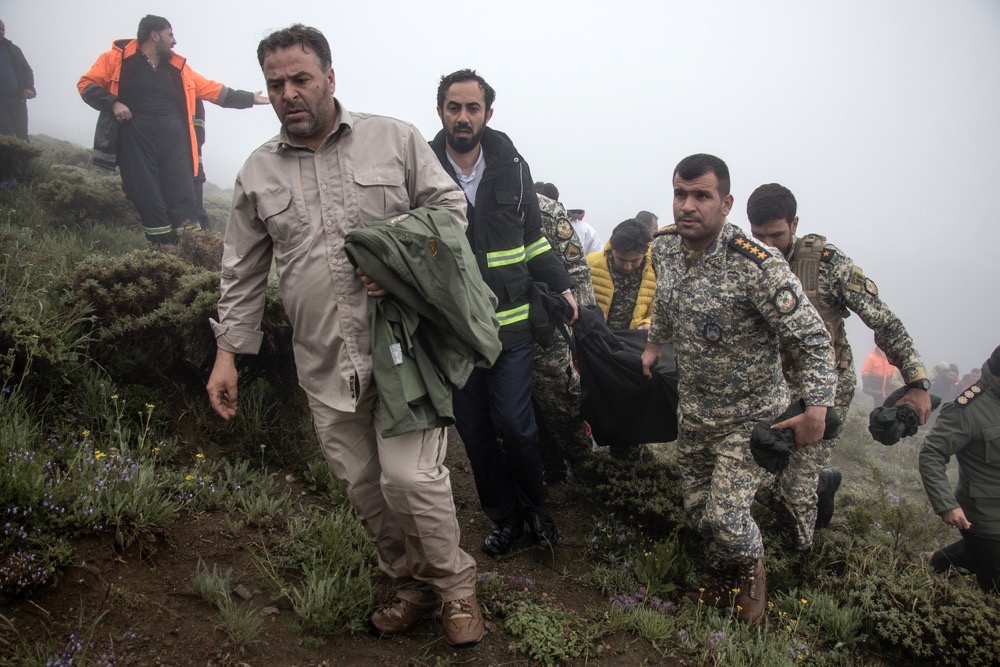
Raisi had earlier met Azerbaijan’s President Ilham Aliyev on their common border to inaugurate a dam project.
On the return trip, only two of the three helicopters in his convoy landed in the city of Tabriz, setting off a massive search-and-rescue effort, with several foreign governments soon offering help.
As the sun rose on Monday, rescue crews said they had located the destroyed Bell 212 helicopter — a civilian version of the ubiquitous Vietnam War-era UH-1N “Twin Huey” — with no survivors among the nine people on board.
State television channel IRIB reported that the helicopter had “hit a mountain and disintegrated” on impact.
Analysts have highlighted concerns about the safety of Iran’s civilian and military aircraft, many of which are in a poor state of repair after decades of US sanctions deprived the nation of new models and spare parts.
Iran has kept its civil and military aviation fleets flying during its isolation since the 1979 revolution through a combination of smuggled parts and reverse-engineering, according to Western analysts.
“Spare parts would have definitely been an issue for the Iranians,” Cedric Leighton, a retired US Air Force colonel, told CNN.
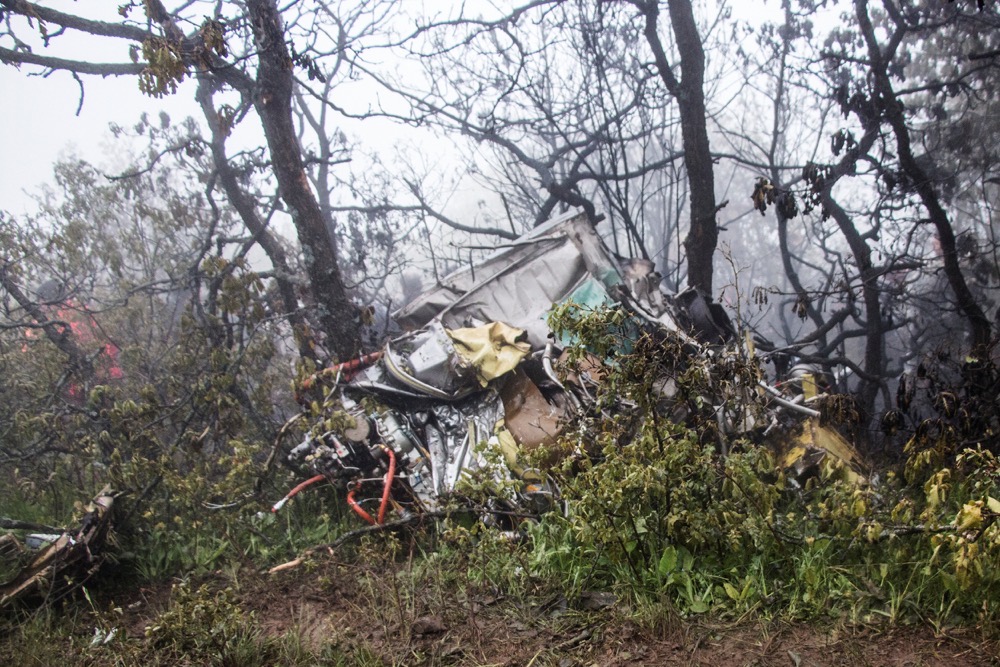
“In this particular case, I think this confluence of spare parts, because of the sanctions, plus the weather, which was very bad over the last few days in this particular part of northwestern Iran.
“All of that, I think contributed to a series of incidents and a series of decisions that the pilot and possibly even the president himself made when it came to flying this aircraft … And unfortunately for them, the result is this crash.”
Sunday’s incident is only the latest in a long history of air disasters that have claimed the lives of world leaders since the dawn of aviation.
One of the first instances of a serving leader or head of state to die in an air accident was Arvid Lindman, the prime minister of Sweden, whose Douglas DC-2 crashed into houses in Croydon, south London, while attempting to take off in thick fog on Dec. 9, 1936.
As the age of aviation took off during the interwar period, more and more leaders began taking to the skies for diplomatic visits and to touch base with the more distant corners of their dominions.
On Sept. 7, 1940, Paraguayan President Jose Felix Estigarribia died in a plane crash just a year after taking office, followed in 1943 by Poland’s prime minister in exile, Wladyslaw Sikorski, who died on July 4, 1943, when his B24C Liberator crashed into the Mediterranean shortly after taking off from Gibraltar.
While aviation technology and safety rapidly advanced after the Second World War as more and more countries began establishing their own air forces and civilian commercial fleets, technical faults, bad weather, and foul play continued to claim lives.
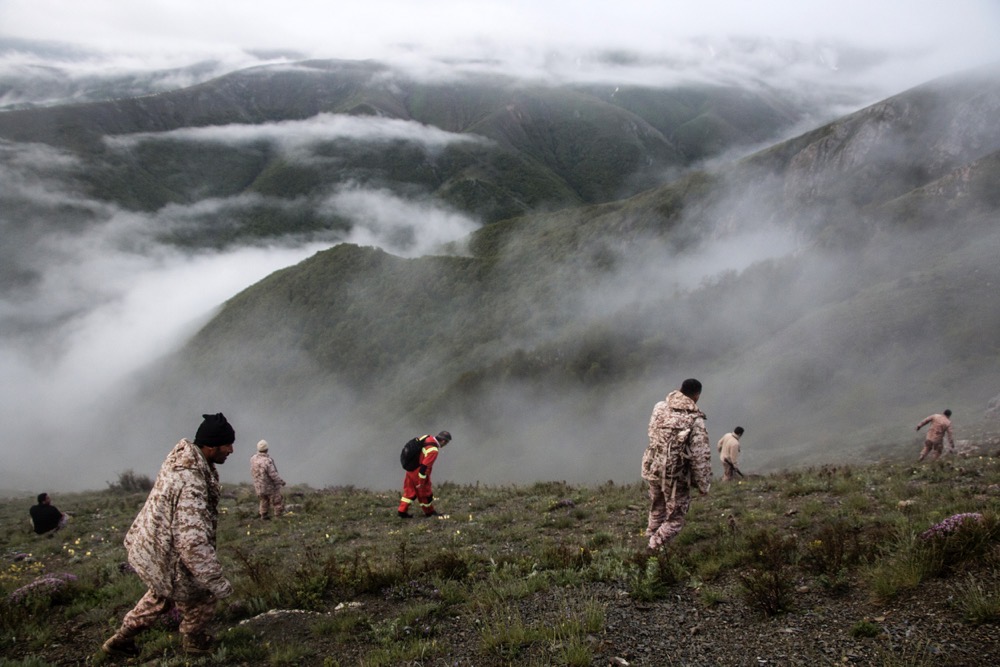
On March 17, 1957, Ramon Magsaysay, the president of the Philippines, was killed when his plane crashed into Mount Manunggal in Cebu. A year later, on June 16, Brazil’s interim president, Nereu Ramos, died in a Cruzeiro airline crash near Curitiba Afonso Pena International Airport.
Africa has also seen its share of air disasters. On March 29, 1959, Barthelemy Boganda, president of the Central African Republic, died when his Atlas flying boxcar exploded in midair over Bangui.
Then, in 1961, Swedish economist and diplomat Dag Hammarskjold, who served as the second secretary-general of the UN, died when his Douglas DC-6B crashed into a jungle in Zambia on Sept. 18.
With the 1960s came the widespread adoption of helicopter flight in conflict zones, search-and-rescue operations, and increasingly as an efficient way for politicians, diplomats and business leaders to get around and land in areas without an airstrip.
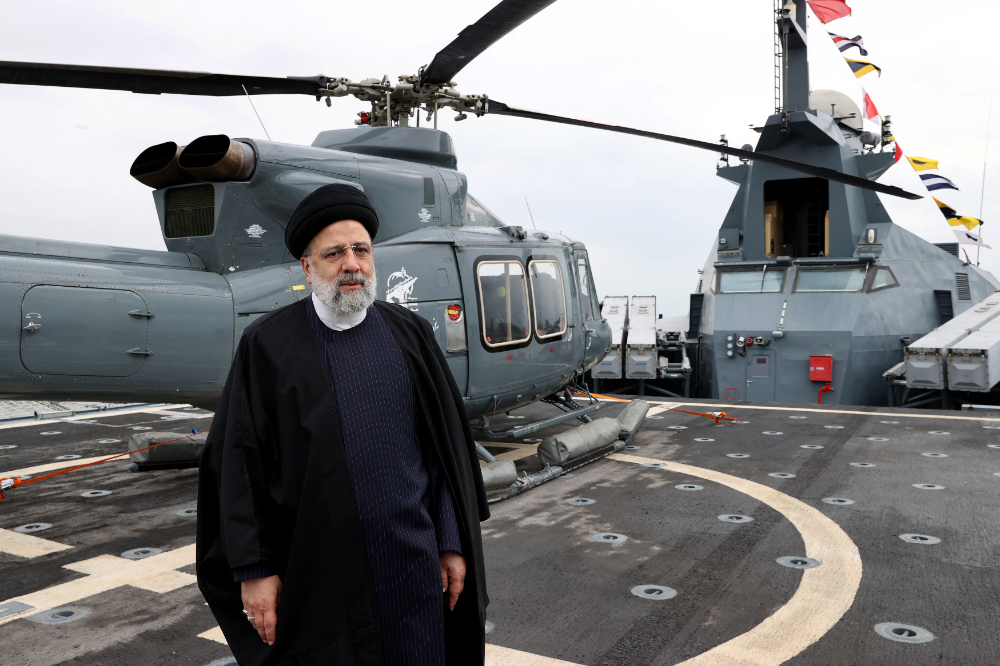
Like fixed-wing aircraft, however, helicopters are not immune to bad weather conditions, obstacles, human error, sabotage or terrorism.
One of the first world leaders to die in a helicopter crash was Abdul Salam Arif, the president of Iraq, who reportedly died when his aircraft was caught in a thunderstorm on April 13, 1966.
Similar incidents followed with the April 27, 1969, death of Bolivian President Rene Barrientos in a helicopter crash in Arque, and Joel Rakotomalala, the prime minister of Madagascar, in a crash on July 30, 1976.
Bad weather contributed to the death of Yugoslav premier Dzemal Bijedic on Jan. 18, 1977, when his Gates Learjet crashed into a mountain during a snowstorm.
Climatic conditions were also blamed when Ecuadorian President Jaime Roldos Aguilera’s Beech Super King Air 200 FAE-723 crashed on May 24, 1981, and when Mozambican President Samora Machel’s Tupolev-134A crashed while trying to land in a storm at Maputo on Oct. 19, 1986.
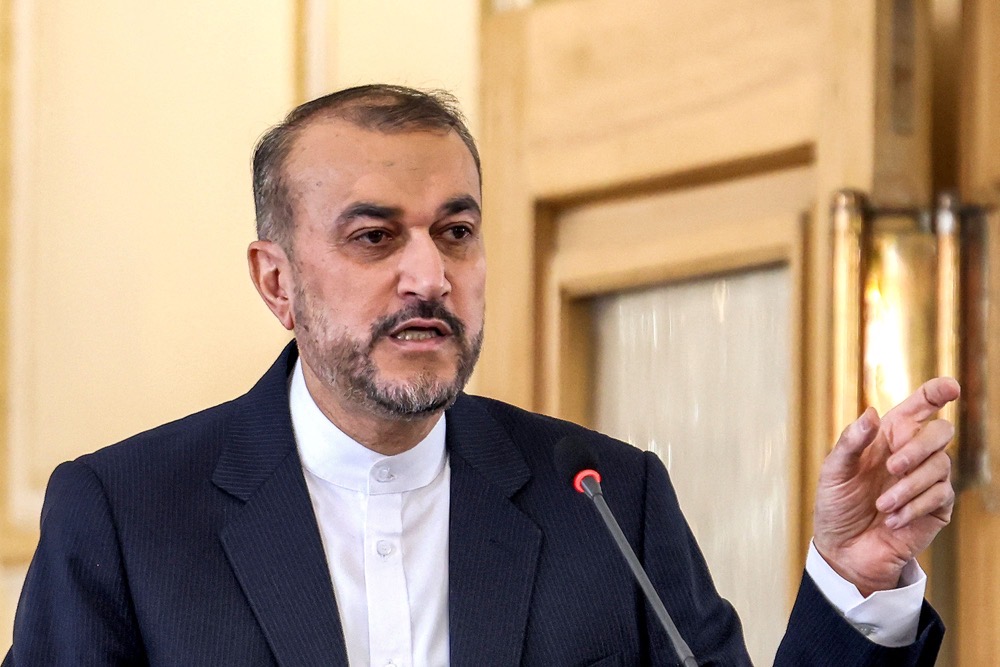
As the skies became busier, the potential for accidents grew. On July 18, 1967, Humberto de Alencar Castelo Branco, the first president of the Brazilian military dictatorship after the 1964 coup, died in a midair collision of Piper PA-23 aircraft near Fortaleza.
On May 27, 1979, Ahmed Ould Bouceif, the prime minister of Mauritania, died in a plane crash off the coast of Dakar, Senegal, and Francisco Sa Carneiro, who served as Portugal’s prime minister for only 11 months, died on Dec. 4, 1980.
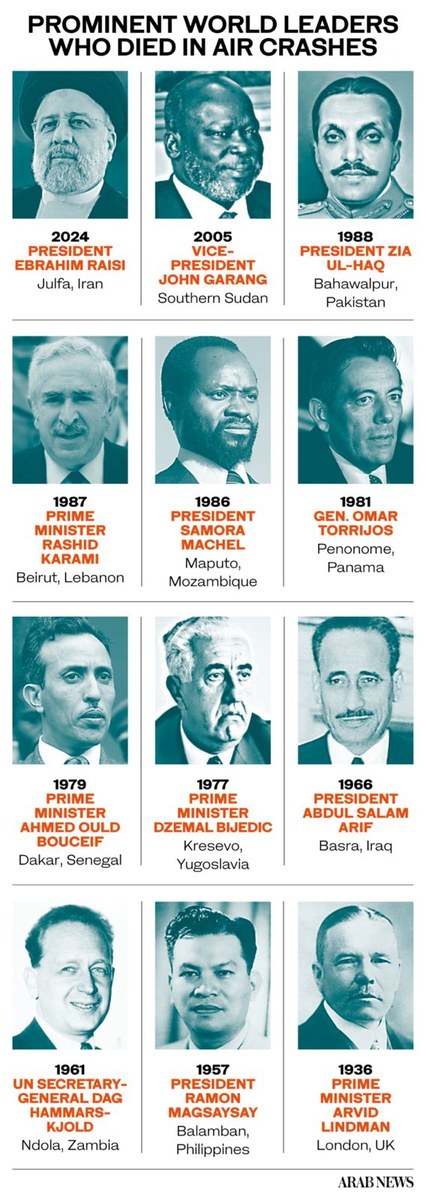
Not all crashes can be blamed on the weather or pilot error, however. In several cases, aircraft have been deliberately targeted as a means of killing their high-profile passengers.
Panamanian leader Gen. Omar Torrijos died on July 31, 1981, when his Panamanian Air Force plane crashed under suspicious circumstances.
On June 1, 1987, Lebanese statesman Rashid Karami, who served as prime minister eight times, was killed when a bomb detonated aboard his helicopter shortly after takeoff from Beirut.
In one particularly devastating incident, Rwandan President Juvenal Habyarimana and Burundian President Cyprien Ntaryamira were both killed on April 6, 1994, when their Dassault Falcon 50 9XR-NN was shot down while approaching Rwanda’s Kigali airport.
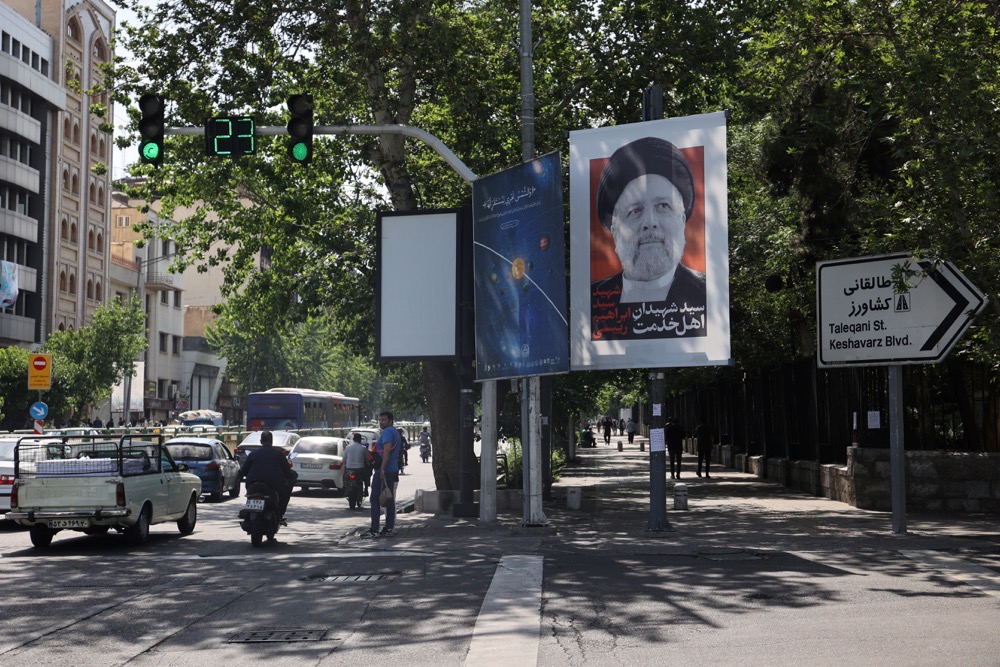
There have been several investigations into the air crash that killed Pakistan’s Gen. Zia Ul-Haq on Aug. 17, 1988, but no satisfactory cause was found, leading to a flurry of assassination theories.
The Pakistani Air Force Lockheed C-130B crashed shortly after takeoff from Bahawalpur. According to investigators, the plane plunged from the sky and struck the ground with such force that it was blown to pieces and wreckage scattered over a wide area.
Despite vast improvements in aviation safety, disasters have continued to strike well into the new millennium.
On Feb. 26, 2004, Macedonian President Boris Trajkovski died when his Beechcraft Super King Air 200 Z3-BAB crashed while trying to land in poor weather at Mostar.
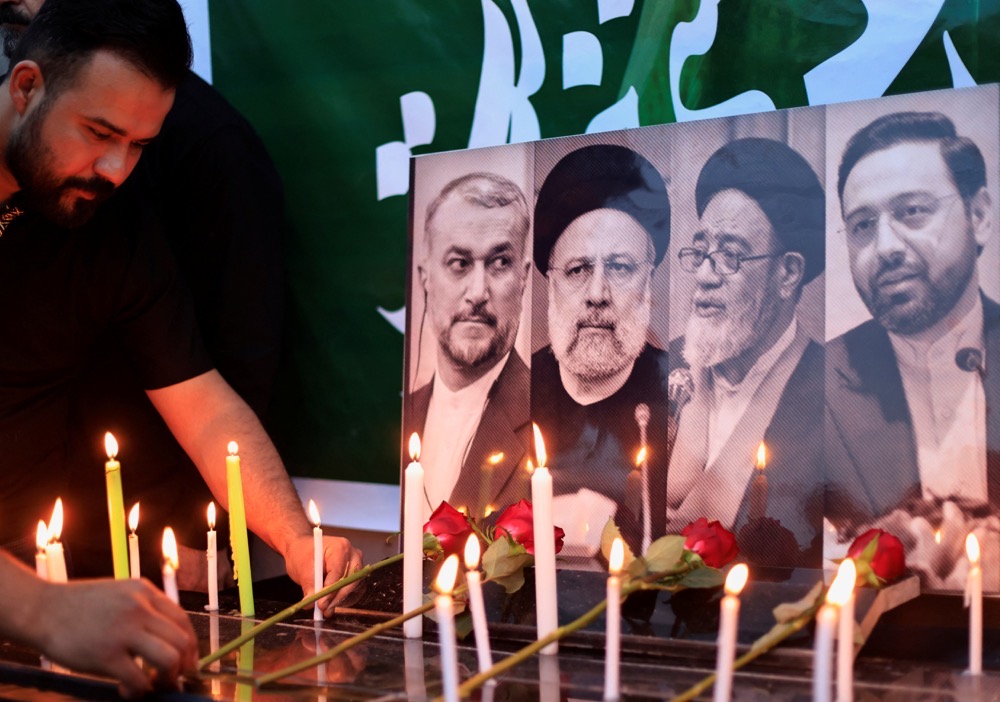
John Garang, leader of the Sudan People’s Liberation Army and briefly first vice president of Sudan, died when his helicopter crashed into a mountain range in the country’s south after getting caught in poor weather on July 30, 2005.
Muhammadu Maccido, the sultan of Sokoto in Nigeria, was killed alongside his son when his ADC Airlines Flight 53 crashed on Oct. 29, 2006, and Polish President Lech Kaczynski died on April 10, 2010, when his Tupolev-154 crashed in foggy weather when approaching Smolensk airport in western Russia.
In the latest incident prior to Raisi’s death, the deceased was actually at the controls when the aircraft got into difficulty. Chile’s former president, Sebastian Pinera, was killed on Feb. 6 this year when the Robinson R44 helicopter he was piloting crashed nose-first into Lake Ranco.

While this list of fatalities might give world leaders pause for thought as they step aboard their presidential jets on their next diplomatic outing, it is well worth remembering that modern air travel is statistically many times safer than traveling by road.
That said, an experienced pilot, an aircraft in good condition, a clear weather forecast, and a flight plan shrouded in secrecy would no doubt improve their odds of making a safe arrival.

More than 569 tons of aid delivered across floating pier into Gaza, says US CENTCOM

CAIRO: The US Central Command (CENTCOM) said on Tuesday more than 569 metric tons of humanitarian assistance has been delivered so far across a temporary floating pier to Gaza, but not all the aid has reached warehouses.
Aid deliveries began arriving at a US-built pier on Friday as Israel comes under growing global pressure to allow more supplies into the besieged coastal enclave.
The UN said that 10 truckloads of food aid — transported from the pier site by UN contractors — were received on Friday at a World Food Programme warehouse in Deir El Balah in Gaza.
But on Saturday, only five truckloads made it to the warehouse after 11 others were cleaned out by Palestinians during the journey through an area that a UN official, speaking on condition of anonymity, said has been hard to access with humanitarian aid.
The UN did not receive any aid from the pier on Sunday or Monday.
US says Iran sought help over president crash

- “Ultimately, largely for logistical reasons, we were unable to provide that assistance”
WASHINGTON: The United States said Monday that arch-enemy Iran sought assistance over a helicopter crash that killed president Ebrahim Raisi, as Washington meanwhile offered condolences despite saying he had “blood on his hands.”
The State Department said Iran, which has had no diplomatic relations with Washington since the aftermath of the 1979 Islamic revolution, reached out afer Raisi’s aging chopper crashed in foggy weather Sunday.
“We were asked by the Iranian government for assistance,” State Department spokesman Matthew Miller told reporters.
“We said that we would be willing to assist — something that we would do with respect to any government in this situation,” he said.
“Ultimately, largely for logistical reasons, we were unable to provide that assistance.”
He declined to go into detail or describe how the two countries communicated. But he indicated Iran was seeking help in the immediate aftermath to find the helicopter of Raisi, who died along with his foreign minister, Hossein Amir-Abdollahian, and seven others.
The crash came after the United States and Iran reportedly held their latest quiet talks in Oman aimed at increasing stability following open clashes between Iran and Israel.
The State Department in a statement offered “official condolences” over the deaths.
“As Iran selects a new president, we reaffirm our support for the Iranian people and their struggle for human rights and fundamental freedoms,” it said.
President Joe Biden’s administration described condolences as standard and not showing support for Raisi, who as a judge presided over mass executions of politicial prisoners and under whose presidency authorities have cracked down on mass protests led by women.
“This was a man who had a lot of blood on his hands,” National Security Council spokesman John Kirby told reporters, saying Raisi was responsible for “atrocious” abuses.
Kirby said, however, that “as in any other case, we certainly regret in general the loss of life and offered official condolences as appropriate.”
The United States has often but not always offered condolences in the past to leaders it opposed with such messages sent over Joseph Stalin, Kim Il Sung and Fidel Castro.
But the condolence message, along with similar words from European nations, brought anger to some opponents of the clerical state who saw Raisi’s death as reason to celebrate.
Masih Alinejad, a women’s rights activist who US investigators say was the target of an assassination plot in New York engineered by Tehran, wrote on X, formerly known as Twitter, “Your condolences only pour salt on the wounds of the oppressed.”
Defense Secretary Lloyd Austin indicated that US forces have not changed their posture after the crash in Iran, where decisions are ultimately made by the supreme leader, Ayatollah Ali Khamenei.
“I don’t necessarily see any broader regional security impact,” Austin told reporters.
He preemptively denied any US role and said there was no reason to think it was anything other than an accident.
“The United States had no part to play in that crash. That’s a fact, plain and simple,” Austin said.
“It could be a number of things — mechanical failure, pilot error, you name it,” he said.
Iran’s military ordered an investigation. It has often in the past blamed security incidents on Israel and the United States, which both in recent years have struck Iranian targets.
Former foreign minister Mohammad Javad Zarif blamed the crash on continued US sanctions which have impeded the sale of aviation parts.
Asked about Zarif’s remark, Miller said: “Ultimately, it’s the Iranian government that is responsible for the decision to fly a 45-year-old helicopter in what was described as poor weather conditions, not any other actor.”
Amal Clooney helped ICC weigh Gaza war crimes evidence

- Clooney said she was asked by prosecutor Karim Khan to join an expert panel
WASHINGTON: Amal Clooney helped the International Criminal Court weigh evidence that led to the decision to seek arrest warrants for top Israeli and Hamas leaders, the human rights lawyer said Monday.
The high-profile British-Lebanese barrister posted a statement on the website of the Clooney Foundation for Justice, which she founded with her husband, American actor George Clooney.
Both she and the foundation had previously been criticized on social media for not speaking out over the civilian death toll in Gaza.
Clooney said she was asked by prosecutor Karim Khan to join an expert panel to “evaluate evidence of suspected war crimes and crimes against humanity in Israel and Gaza.”
The statement came the same day Khan said he was seeking arrest warrants against Israeli Prime Minister Benjamin Netanyahu and Defense Minister Yoav Gallant, as well as top Hamas leaders.
“Despite our diverse personal backgrounds, our legal findings are unanimous,” Clooney said, adding there were “reasonable grounds to believe” that Hamas’ Yahya Sinwar, Mohammed Deif and Ismail Haniyeh engaged in “hostage-taking, murder and crimes of sexual violence.”
With Netanyahu and Gallant, meanwhile, there are “reasonable grounds to believe” the two have engaged in “starvation as a method of warfare, murder, persecution and extermination.”
Khan thanked Clooney in his statement announcing the decision to seek the arrest warrants.
Clooney and other members of the panel also wrote an opinion piece in the Financial Times on Monday supporting ICC prosecutions for war crimes in the conflict.
As Hamas, Israel and top ally the United States all denounced the move, the experts wrote that they “unanimously agree that the prosecutor’s work was rigorous, fair and grounded in the law and the facts.”
Clooney, in her statement, said that “my approach is not to provide a running commentary of my work but to let the work speak for itself.”
“I served on this panel because I believe in the rule of law and the need to protect civilian lives,” she added.
“The law that protects civilians in war was developed more than 100 years ago and it applies in every country in the world regardless of the reasons for a conflict.”
Israel says retrieved bodies of hostages were in Gaza tunnels

- Israel has killed more than 35,000 Palestinians, according to Gaza’s Health Ministry
JERUSALEM: The Israeli army said Monday that the bodies of four hostages retrieved from Gaza last week were found in tunnels under Jabalia, where troops have been engaged in fierce fighting in recent days.
The army said last week it had recovered the bodies of Ron Benjamin, Yitzhak Gelerenter, Shani Louk, and Amit Buskila, all of whom it said had been killed in Hamas’s October 7 attack on southern Israel.
Their remains were recovered “from underground tunnels in Jabalia in northern Gaza,” the army said late Monday in a statement.
During a military operation, Israeli soldiers searched a suspected building in which a tunnel shaft was located, the army said.
“Soldiers then entered the underground tunnel route in a night operation and inside it conducted combat,” it said.
During the fighting the soldiers “located the bodies of the hostages and rescued them from the tunnels,” the army said.
Gelerenter, Louk, and Buskila were killed and abducted from the Nova music festival, while Benjamin was killed at the Mefalsim intersection from where his body was taken to Gaza, the army said last week.
Thousands of young people had gathered on October 6 and 7 to dance to electronic music at the Nova festival event held near Re’im kibbutz, close to the Gaza border.
Fighters from Hamas crossed over from Gaza and killed more than 360 people at the festival, Israeli officials have said.
The Nova festival victims accounted for nearly a third of the more than 1,170 people killed in the October 7 attack, most of them civilians, according to an AFP tally based on Israeli figures.
Out of the 252 people taken hostage that day, 124 are still being held inside the Gaza Strip, including 37 the army says are dead.
Israel’s retaliatory offensive against Hamas has killed at least 35,562 people in Gaza, also mostly civilians, according to data provided by the Hamas-run territory’s health ministry.
Since early May the Israeli military has been engaged in renewed street battles in northern and central Gaza.
On Friday, the army told AFP that the fighting in the northern town of Jalalia was “perhaps the fiercest” in over seven months of war.
Fighting in north and central Gaza erupted again when the military began its assault in the far-southern city of Rafah on May 7.



